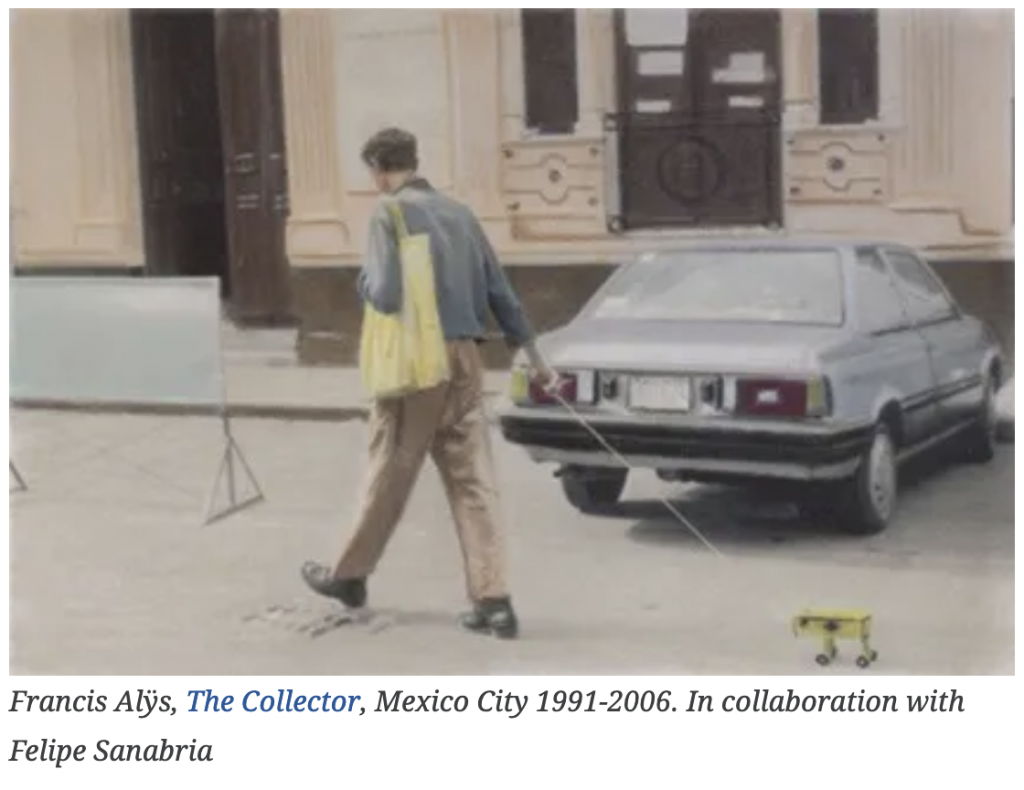“I will walk in the city over the course of seven days, under the influence of a different drug each day. My trip will be recorded through photographs, notes, or any other media that become relevant.”
“Thus, the experiment conducted by the artist consisted of imbibing the following substances May 5 11 of that year: spirits, hashish, speed, heroin, cocaine, valium, and ecstasy. The process of creating the work involved preserving (ostensibly) a state of intoxication for fourteen hours each day. Alys later displayed a page of text, including diaristic accounts of his experiences (“Awareness of a change of state, but not followed by a visual echo. Auditory acuity enhanced. Appetite gone. Smoking diminished. At night, nausea and thirst.”) and a photographic image of the artist’s walking feet clad in Converse high-tops was used to represent the piece.” [credit]
Further reading:
- “Walk Ways” exhibition catalog. Essay by Stuart Horodner. Foreword by Judith Richards.
